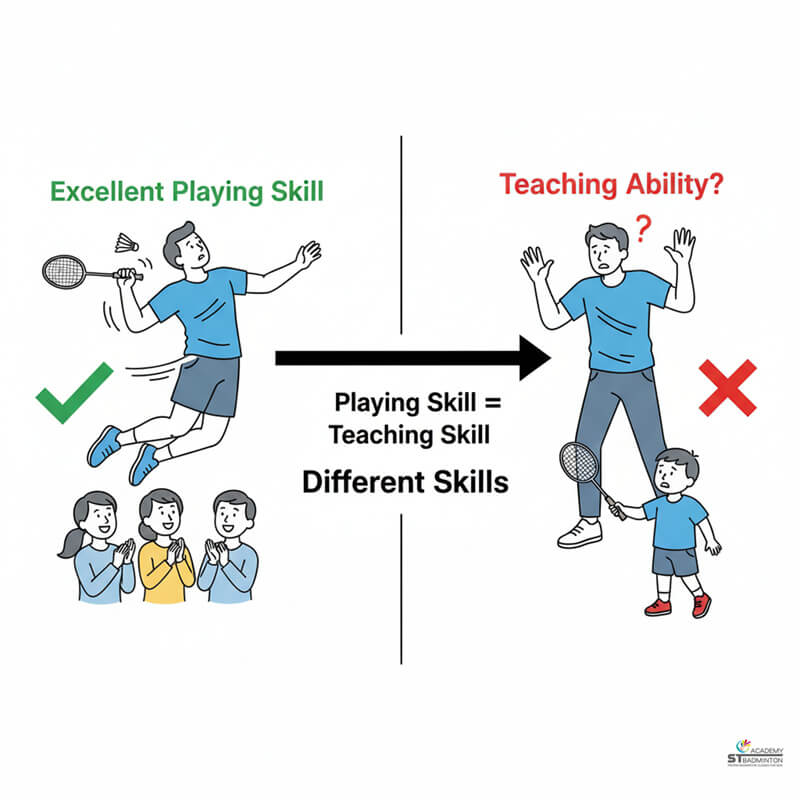Welcome to ST Badminton Academy’s badminton training in Malaysia! Grip strength is an essential component of training. Having a strong and secure grip can help you make more accurate shots with greater power and control. In this article, I’ll be discussing some of the best strategies for improving grip strength in badminton training.
Grip strength plays a big role in success on the court – it’s not just about having powerful swings or lightning-fast reflexes. With improved grip strength comes increased stability when making contact with the shuttlecock, allowing for more precise aim and better follow-throughs. So let’s get into it: what are the best strategies for improving grip strength?
| Topic | Summary |
|---|---|
| Developing A Strong Handshake | As a badminton trainer, emphasize the importance of a strong handshake for setting the tone in matches. Recommend yoga for flexibility and full-body strength, leading to better grip. Using chalk during play enhances hand-racket control. Weightlifting exercises, stretching, and pulley systems contribute to grip strength. Encourage proper form for maximum benefits. |
| Weightlifting Routines | Create a comprehensive weightlifting routine for improved grip strength. Consider individual goals, focus on form, and incorporate compound movements like squats and deadlifts. Ensure a balance between rest and progress for optimal results. |
| Doing Hand Exercises | Recommend hand exercises for grip strength, including squeezing balls and isolating finger movements. Emphasize tracking progress, taking breaks, and avoiding overtraining. |
| Using Resistance Bands | Advocate for resistance bands to improve grip strength. Track progress, use proper form, and incorporate foam rolling for reduced tightness and increased mobility. Perform static holds and dynamic movements to target forearm and wrist muscles. |
| Practicing Proper Technique | Stress the importance of proper posture, movement patterns, and mental focus for grip strength in badminton. Include drills, repetitions, and rest periods. Emphasize muscle tension, range of motion, and equipment for injury prevention. |
| Grip Strength | Highlight the significance of a strong grip for effective badminton play. Recommend taping knuckles, using foam rolling in warm-ups, and practicing proper technique. Regular exercises, including racquetball, slingshots, and finger-focused exercises, contribute to grip strength. |
| Posture | Emphasize correct posture for playing badminton, including feet positioning and back straightening. Suggest incorporating stretching drills and plyometrics for improved postural stability and endurance. |
| Movement Patterns | Focus on mobility and agility drills, such as shuttle runs and footwork ladders, for better movement patterns. Incorporate dynamic stretches into practice sessions for increased joint and muscle range of motion. |
| Training With Grips | Recommend racquetball and slingshots for improving grip strength. Stress the importance of hand-eye coordination, muscle memory, and overall arm strength. Encourage squeezing rubber balls for finger strength. |
| Eating Foods That Support Grip Strength | Highlight the importance of nutrition for grip strength. Include proteins like fish and chicken, omega-3 fatty acids from salmon and walnuts, and vitamin B6 from whole grains. Advocate for a well-rounded diet to complement grip pads and stretching exercises. |
| Taking Rest Days | Emphasize the necessity of rest days for recovery and sustained progress. Suggest incorporating yoga on rest days to improve flexibility, balance, and concentration. Maintain proper form in yoga to reduce muscle strain. |
Developing A Strong Handshake
As a badminton trainer, I know how important it is to have strong grip strength. Having a strong handshake can set the tone for any match and give your opponents an immediate impression of your skills before you even hit the court.
That’s why I recommend all my students practice yoga in order to improve their flexibility and build full body strength, which will naturally lead to stronger hands and better grips! In addition to practicing yoga regularly, using chalk on your hands when playing badminton helps increase friction between your hand and racket so that you can maintain better control during long rallies.
These two strategies are essential for helping players gain greater confidence when gripping their rackets – but they’re just the beginning. Now let’s talk about lifting weights…
Lifting Weights
I’m always looking for ways to help my students improve their grip strength in badminton. Weightlifting exercises like wrist curls and barbell rows are great for increasing grip strength. It’s important to create a weightlifting routine that includes plenty of sets and reps in order to maximize the benefit of these exercises. By creating a comprehensive weightlifting routine, my students will be able to improve their grip strength and become even better badminton players.
Weightlifting Exercises
Hey guys, I’m your badminton trainer and today we’re going to be talking about weightlifting exercises that can help you improve your grip strength. One of the best strategies for this is stretching regularly in order to keep your muscles loose and limber so that they don’t get too tight when lifting weights.
Incorporating pulley systems into your workouts is also a great way to build up better grip strength as it allows you to use lighter weights while still getting an effective workout with more controlled movements. Finally, make sure to focus on proper form throughout every exercise – if you’re not using the correct technique then you won’t be able to reap all the benefits from each lift!
Weightlifting Routines
Now that we’ve discussed some of the best exercises for grip strengthening, let’s move on to creating a weightlifting routine. Depending on your individual goals and preferences, you should start by deciding how many days per week you want to lift weights. This can range from 1-7 days with 3-4 being an optimal amount of time in order to make sure you’re getting enough rest while still making progress.
Once you have a schedule set up, it’s important to focus on form throughout each exercise – if you don’t use proper technique then you won’t be able to reap all the benefits from each lift!
Additionally, make sure to include compound movements such as squats and deadlifts into your routine as they will help build full body strength which is essential when playing badminton. Lastly, remember to always listen to your body and take breaks when needed so that you stay safe and healthy while lifting weights!
Doing Hand Exercises
I’d highly recommend doing hand exercises to improve grip strength for badminton players. This is one of the most effective ways to help strengthen your fingers, as well as improve coordination and control.
Start by using a tennis or racquetball ball and squeezing it with each hand for around 30 seconds at a time – if you can do longer than that then feel free to push yourself further! After this, move onto a rubber ball; these will give more resistance when squeezing them, which helps build up even more power in your hands. You should also focus on isolating finger movement too; try curling all five fingers together, both individually, and separately from thumb movements.
Finally, make sure you keep track of how long you’re training each day and adjust accordingly depending on how much progression you want to see. It’s important not to overdo it though so take regular breaks between sets and don’t forget to stretch afterwards. Working smarter rather than harder is key here since we need strong but healthy hands for playing badminton! With that said, let’s now look at another way to improve grip strength: using resistance bands…
Using Resistance Bands
I’m a big believer in resistance bands when it comes to improving grip strength. They come in various sizes, so you can choose the right one for your level of fitness and experience. I highly recommend tracking your progress with this training method since you can easily measure how much stronger you’ve become over time. To maximize the results, I suggest foam rolling before starting any exercises; this helps reduce tightness and inflammation while also increasing mobility.
The great thing about using resistance bands is that they allow you to challenge yourself without having to worry about injury risk or strain on other body parts. You can use them for static holds or dynamic movements like curls, extensions, rows, and shrugs. All these exercises will help build up forearm and wrist muscles which are essential for an effective badminton grip.
It’s important to focus on proper form during all these exercises; the incorrect technique could lead to poor muscle activation and inefficient results from your workouts.
If needed, have a coach observe your performance or take video footage of your routine so you can review it afterward and make necessary adjustments going forward. This way, you’ll be able to optimize your exercise program and get maximum benefit out of it! Mastering proper technique is key if you want to improve grip strength effectively in badminton training.
Practicing Proper Technique
Grip strength is essential in badminton, so I make sure my students practice proper posture and movement patterns with their arms and wrists. I also focus on core strength and balance, and how they move their feet.
Mental focus and muscle tension are important too, so I have them practice a variety of drills and repetitions to improve their range of motion. To prevent injury, I make sure they take rest periods and use the right equipment for warm-ups.
Grip Strength
As a badminton trainer, I can’t stress enough the importance of having strong grip strength. Having a good grip on your racket is essential for executing powerful shots and winning points. To help my players improve their grip strength, I always recommend taping their knuckles before each practice session. This helps to protect them from any injuries while also providing extra support when holding onto the handle of the racket.
Additionally, foam rolling can be used as part of warm-up exercises to activate muscles in the hands and forearms that are responsible for gripping power. By regularly doing these two simple exercises, you’ll start noticing an improvement in your grip strength soon! All in all, proper technique coupled with these strategies will ensure that your grip remains strong throughout every game.
Posture
Once your grip strength is up to par, it’s important to make sure that you have the correct posture for playing badminton. Good posture not only makes you look more professional on the court but also helps keep you from getting injured during a match.
I always remind my players to stand with their feet shoulder-width apart and slightly bent at the knees as they prepare for each shot. It’s also key to ensure that your back is straight and your shoulders are relaxed so that you can move freely when returning shots.
To further improve postural stability and endurance, I suggest incorporating stretching drills like side lunges or plyometrics exercises such as squat jumps into practice sessions. This will help build muscle strength in the legs allowing them to be better prepared for long rallies. With proper technique and a strong foundation of posture, any player should feel confident stepping onto the court!
Movement Patterns
Now that you have the proper posture down, it’s time to focus on movement patterns. Increasing your mobility and agility can be done by practicing drills such as shuttle runs or footwork ladders. Both of these drills are great for improving quickness and coordination between shots.
Additionally, I recommend incorporating dynamic stretches like leg swings or arm circles into practice sessions in order to increase the range of motion in the joints and muscles. This will help make sure you’re able to move freely when returning shots during a match. With effective training, players should feel ready to not only handle their opponents’ moves but also anticipate them!
Training With Grips
As a badminton trainer, it’s important to know how to improve grip strength. There are a few strategies that can help you reach your goals! First and foremost, playing racquetball is one of the best ways to increase the grip strength in players. It helps build up muscle memory and coordination between the hands and wrists, which will give them an advantage when they play badminton.
Another great way to improve grip strength is by trying out slingshots. This is similar to racquetball because it requires strong hand-eye coordination while using the same muscles as those used for gripping a badminton racket firmly. Other than choosing a good racket and also remember to choose the best racket restring in Malaysia. Slingshots also provide resistance training since they require strong movements from both arms and fingers – this helps develop overall arm strength too!
Finally, practice exercises like squeezing rubber balls or picking up small objects with just your fingertips several times a day can be beneficial for increasing grip strength over time. These exercises focus on strengthening individual finger muscles rather than working on full-hand grip power at once, so make sure to do them regularly if you want maximum benefits. With these tips in mind, I’m sure you’ll notice an improvement in your badminton game sooner rather than later – now let’s discuss eating foods that support grip strength…
Eating Foods That Support Grip Strength
Now that you have some tools to improve your grip strength when training, it is also important to take a look at what you eat. Eating foods that support your grip strength can be just as effective – if not more so – than physical exercises and stretches. In addition to stretching exercises, there are some key nutrients that will help build up the muscles in your hands and fingers for better control on the court.
First off, consuming enough protein is essential for building muscle mass, including those in your hands and fingers. Eating lean proteins like fish or chicken instead of processed meats such as bacon or hot dogs can provide better quality nutrition with fewer calories.
Other sources of good proteins include legumes (beans), nuts, eggs, yogurt, and tofu. Incorporating these items into meals throughout the day will ensure proper growth without overdoing it on unhealthy fats or sugars.
Second, adding omega-3 fatty acids to your diet can help build strong bones and joints while providing anti-inflammatory benefits. Foods high in Omega-3s include salmon, cod liver oil, hemp seeds, and walnuts; however, supplements may also be beneficial if desired.
Finally, vitamin B6 helps form new red blood cells which carry oxygen through the body needed during intense activities like badminton practice sessions; this nutrient can be found in whole grains such as brown rice or wheat bread along with fortified cereals and oatmeal.
By incorporating these types of food choices into your daily routine in combination with grip pads and stretching exercises mentioned earlier, you’ll have a well-rounded approach to enhancing your grip strength for maximum performance on the court every time!
Taking rest days between workouts also adds an additional layer of importance because recovery time allows muscles to repair themselves before being worked again – something that should not go overlooked when trying to increase grip strength through badminton training.
Taking Rest Days
As the saying goes, “All work and no play makes Jack a dull boy” – taking rest days is just as important in badminton training as any other physical activity. That’s why incorporating regular breaks into your routine should be an essential part of improving grip strength. Resting gives your body time to recover from intense exercise sessions and helps you stay focused for future practices.
One way to incorporate rest days is to practice yoga during them. Yoga helps improve flexibility, balance, and concentration – all of which are key elements when it comes to strengthening your grip on the racquet handle. Additionally, focusing on proper form while practicing can help reduce strain on your muscles, allowing you to hit more powerful shots with greater control over the court. By doing this, you’ll be able to maintain the correct technique while also building up strength endurance over time.
It’s easy to get caught up in pushing yourself further each day but remember that consistent progress doesn’t come overnight – so take some time off every now and then! Integrating yoga into your recovery plan along with maintaining good form will go a long way towards helping you achieve better grip strength in no time at all.
Frequently Asked Questions

How Much Weight Should I Lift To Improve My Grip Strength In Badminton?
When it comes to improving your grip strength in badminton, the amount of weight you should lift depends on the type of grip you use. Generally speaking, a simple overhand grip is best for beginners, and lifting light weights with high repetitions can help build up your hand muscles. However, if you prefer an interlocking or continental grip, heavier weights are necessary to increase muscle size for better control when hitting shots. No matter which grip style you choose, make sure to practice good hand care by stretching before and after each session and using protective wraps for more intense workouts.
What Are The Best Exercises To Do To Improve Grip Strength In Badminton?
If you’re looking to improve your grip strength for badminton, then there are several exercises that can help. Doing specific drills like gripping a towel and squeezing it as hard as you can or doing finger push-ups on a table will target the muscles in your hands directly. Additionally, weight training is also important for strengthening your forearms and wrists so they can support a heavier racket during long matches. Make sure to warm up properly before any exercise sessions to avoid injury!
How Often Should I Be Using Resistance Bands To Improve My Grip Strength In Badminton?
When it comes to strengthening your grip for badminton, resistance bands are a great tool. With proper form and technique, you can use them effectively to improve your grip strength. It’s important not to overdo it though – I recommend using them for short sessions multiple times per week. This way, you’ll be able to work on your grip without overexerting yourself or risking injury.
Aim for 2-3 sets of 10 reps with light-to-medium resistance band training each session. Keep up this routine consistently and you should start noticing results in no time!
Are There Any Special Grips I Should Be Using To Improve My Grip Strength In Badminton?
When it comes to improving grip strength in badminton, the most important thing is having the right handling technique. Utilizing power strokes with a correct grasp of your racket will help you generate more force and control when playing. There are several grips that can be used for different stroke types such as forehand shots and backhand shots.
The thumb-up grip is usually recommended for beginners as it allows players to make quick wrist movements while also providing better control over power strokes. It’s always beneficial to learn from an experienced coach, who can guide you on which grip works best for your specific style of play.
What Kind Of Foods Should I Be Eating To Maximize My Grip Strength In Badminton?
If you’re looking to maximize your grip strength in badminton, nutrition is key. As a coach, I recommend focusing on foods that help with grip maintenance and overall good nutrition planning. Eating lots of protein like lean meats, eggs, nuts, and seeds will help build muscle mass which can improve your grip strength over time.
Additionally, eating brightly colored fruits and vegetables provides essential vitamins and minerals needed for maintaining strong muscles and joints as well as aiding in recovery after strenuous training sessions. With the right diet plan tailored to your individual needs, you’ll be able to see improvements in your grip strength quickly!
Join Professional Badminton Training to Learn Grip Strength in Malaysia
If you’re looking to improve your grip strength in badminton, don’t fret – with the right strategies and dedication, it can be done. As a coach, I’m often asked what’s the best way to get stronger hands for better control of the racket and racquet head speed. My advice? A combination of weight training and resistance bands is key when it comes to building up your grip muscles; incorporate exercises like barbells curls and wrist rolls into your routine for maximum benefit.
Additionally, make sure you’re eating enough protein-rich foods such as eggs, chicken breast, or fish so that those hardworking muscles have something to fuel them during intense practices! With these tips in mind, there’s no stopping you from achieving peak performance on the court. So go ahead: grab hold of that dream and watch yourself soar past opponents with confidence!





